Firstly, a Book...
This section will include what I intend to be a series of short books to consolidate my own research, and provide supplementary reading for those attending lectures on the subjects listed further down.
A Short History of the Suez Canal
The origins of the Suez Canal go back to the age of the Pharoahs nearly 4000 years ago; some of them foresaw problems that have beset the modern canal. It has been widened, deepened, duplicated, lengthened and fought over since it was first opened in 1869, but continues to provide a vital artery for World trade. (3MB)
Maritime History Lectures
These lectures are pre-prepared to comfortably fit a one-hour slot on a cruise ship enrichment shedule. They can be condensed or expanded as required to fit other situations such as presentations to Community Service Organisations, for example Rotary, VIEW, Probus and Lions Clubs, Historical and Maritime organisations, and branches of the University of the Third Age.
Whilst I do not charge a fee for presenting at organisation meetings, I do welcome a small contribution to my travelling expenses, if feasible. Expressions of interest in the first instance can be made by completing the Contact Page (the last tag above (lifeboat) on this website).
In addition, I am always pleased to correspond with individuals through the same Contacts Page.
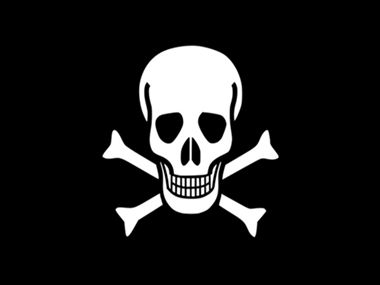
The Golden Age of Pirates Series
The Golden Age of Pirates Part 1
Romantic adventurers or greedy psychopaths? We examine the lives, grisly deeds and untimely end of some of history's most famous pirates. Legends such as Blackbeard, Captain Kidd, Sir Henry Morgan and the vilest of them all, Francois L'Ollonnais
The Golden Age of Pirates - Part 2
The 16th to 18th centuries were known as the Golden Age of Pirates. We look at the lives and misdeeds of some of the most unscrupulous of all, Black Bart, the Sea Queen, The Gentleman Pirate, and many more.
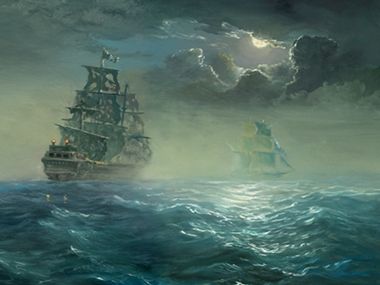
Unsolved Mysteries of the Seas Series
Unsolved Sea Mysteries
Join us on a journey as we examine the known facts behind some of the most famous unsolved mysteries at sea, the story of the Mary Celeste, USS Cyclops, UB-65, the Bermuda Triangle and the Twelve Vile Vortices, and many more. Are there logical explanations, or are they evidence of the para-normal? You decide!
Further Unsolved Mysteries of the Sea
A crewless five mast windjammer sails into oblivion, the mysterious disintegration of a death ship in the Straits of Malacca, the mysterious disappearance of a famous sail training ship with all hands, an abandoned trading vessel sailing Arctic waters for 60 years, and why 1968 was such a bad year for submariners.
Great Navigators in History Series
Famous 14th - 15th Century Navigators
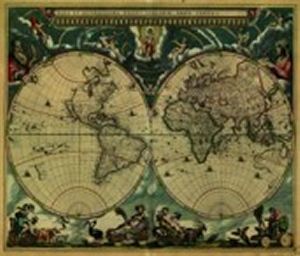
The dawn of an era of great adventurers who bravely ventured into the unknown in search of new trading opportunities and alternative routes to far-flung established empires, together with a need to satisfy their own curiosity. We look at the personal stories of some of history's most famous, Dias, Columbus, Magellan, Vespucci, Da Gama, and the most celebrated Admiral in Chinese history, Zheng He.
Famous Ocean Explorers
Throughout history mankind has pushed the boundaries of the known world, seeking fame and often fortune by venturing into dangerous and inhospitable territory. We visit the adventures of several famous explorers in history who left their mark on the world, Bering who gave his name to the famous strait that separates the Asian and North American continent, Shackleton, Scott, Amundsen who surveyed the poles, and the tragic disappearance of Sir John Franklin in his quest to find the elusive North-West passage.
To the Ends of the Earth - Famous Polar Explorers
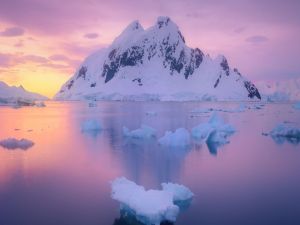
For centuries Europeans have been fascinated by the frozen regions covering both the North and South Poles. In fact, Captain James Cook was the first to determine that the Antarctic continent stood alone, and many followed in his footsteps, risking their ships, crews and their own lives in the name of science.
We follow in the wake of men such as Ross, Scott, Amundsen, Shackleton and Peary as they face danger, and sometimes death whilst exploring Earth's frozen wastelands.
Great Maritime Explorers - Mapping Australia's Coastline
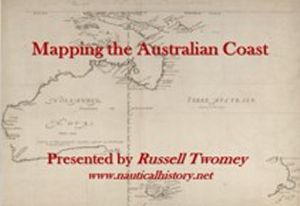
We follow the footsteps of those intrepid adventurers who, over the centuries either through misadventure or intent, were the first to sight and meticulously map the wild coastline of Australia. Men such as James Cook, William Dampier, Bass and Flinders, Torres and Abel Tasman who risked all in the quest to explore the unknown.
Great Maritime Explorers - Mapping New Zealand's Coastline
We follow the footsteps of the Early Polynesians who bravely sailed south across the vast Pacific Ocean to settle in Aotearoa, and the much later arrival of those Dutch, British and French adventurers who mapped and, in many cases, settled on the wild coastline of New Zealand. The story of Europeans such as Abel Tasman, James Cook, Marc Joseph Marion du Fresne, Cyrille-Pierre-Theodore Laplace, Jean Francois Marie de Surville, and the French plan to establish a colony at Akaroa.
Explorers of the South Pacific
South Seas has always conjured up visions of a tropical paradise, a myriad of mysterious and exotic islands strewn across a jewelled ocean, an area that beckoned many European adventurers, particularly in the 17th and 18th centuries to voyage in search of, to survey and if deemed of value, to claim for the Mother Country. We travel through time to examine some of the most famous of those who sailed to the other side of the world in search of Nirvana.
Two Centuries of Passenger Sea Travel Series
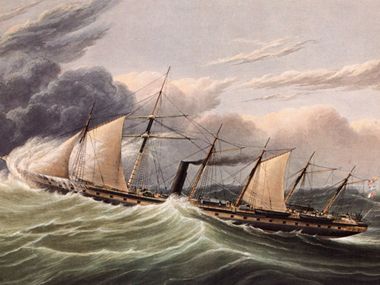
The Early Years of Passenger Sea Travel 1800-1945
How did early migrants to the "New World" endure the terror of ocean passages in the age of sail? How and when did the transition to steam driven ships occur, and how did passenger conditions change with the onset of the development of the elegant super-liner, the forerunner of today's amazing cruise ships?
The Age of Advancement in Passenger Sea Travel - 1946 to Today
The Post WW2 migrant boom and ship conversions to meet demand. The impact of new ship design and the demise of line voyages with affordable air travel in the 1960's. How did the industry respond to this major threat to its existence, and what will the future of sea travel look like?
The Golden Years of Australian Coastal Travel
Commuting between Australian cities by sea was very much in vogue before air travel became affordable for everyone. From the early years of settlement through to the early 1960's, famous Australian shipping companies offered a comfortable and safe alternative means of travel to the rough and ready roads and an unreliable railway system. We look at the growth and demise of many of those companies that were household names, and the ships that plied the coastal sea lanes.
Famous Shipwrecks Through History Series
Famous Shipwrecks of the Australian East Coast
The Australian coast is littered with the bones of over 7,000 vessels that met with disaster. We look at the tragic stories behind the final days of several notorious shipwrecks spanning the 19th and 20th Centuries along the east coast of Australia.
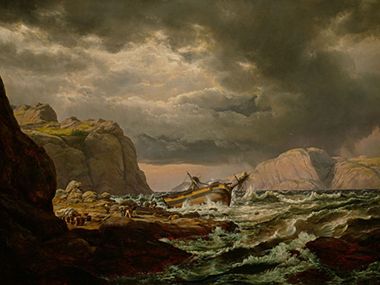
Famous Shipwrecks of the Australian West Coast
The gruesome story of the wreck of the Batavia in 1629, the mysterious loss of the SS Koombana, the tragic loss of HMAS Sydney, the Koolama Incident and much more. A look at some of the most famous shipwrecks on Australia's wild and lonely west coast.
Famous Shipwrecks of the Australian Coast
The Australian Coast is littered with the bones of over 7,000 vessels that met with disaster. We look at the tragic stories behind the final days of eight of the most notorious shipwrecks spanning the 19th and 20th Centuries around the vast coast of Australia.
Historic Shipwrecks
Fascinating stories behind the sinking and recent raising of the ancient warships Vasa and Mary Rose; the story behind the Empress of Ireland tragedy, the strange events around the loss of the Morro Castle, and the untimely end of the USS President Coolidge in WW2.
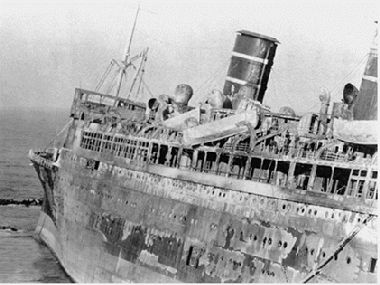
Shipwrecks of the Modern Era
An excursion steamer takes 800 lives in Chicago; the infamous torpedoing of the RMS Lusitania. The Wahine sinks at her homeport doorstep. How could a Russian cruise liner be lost off the coast of NZ? A look behind the untimely loss of six ships in recent times.
Maritime Disasters of the Modern Era
The 20th Century witnessed many tragic disasters at sea resulting in a large loss of life. We examine six of the most famous spanning the entire 20th Century to look at the circumstances that lead to the incident and the consequences from it, including the loss of the General Slocum in New York Harbour, the sinking of the Atlantic liners RMS Republic and SS Andrea Doria, the Christmas cruise of the Lakonia, and the disastrous events leading up to the loss of HMAS Voyager and the Russian submarine Kursk.
The Titanic Legend

Arguably the most notorious disaster in modern maritime history, the Titanic tragedy continues to invoke interest and discussion globally. We examine the events leading up to the incident and the outcomes and myths that emerged beyond the day Titanic made her final voyage to the bottom of the Atlantic.
Famous Sea Battles Through History Series
Great Naval Battles in History
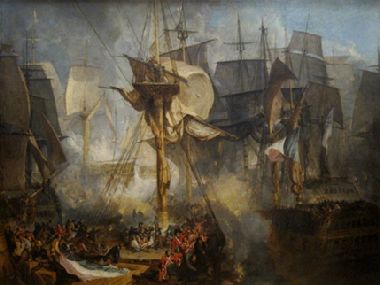
Some of the most famous engagements in history, Lake Champlain during the American War of Independence and the famous Battle of Trafalgar, involving large fleets of ships. The Battle of the Ironclads at Hampton Roads, the turning point in naval warfare, and the Battle of Tsushima, the first naval battle in which wireless played a critical role.
18th - 19th Century Naval Battles
During a time of great turmoil in history, many furious and devastating battles were fought at sea in defence of contested territory in both Europe and North America. War is often the mother of invention, and in three of the battles we visit, unorthadox tactics and technology come to the forefront to win the day. The Battle of Valcour Island so crucial to the outcome of the American War of Independence, The Battle of Trafalgar that prevented Napoleon from realising his dream to conquer Great Britain, and the Battle of the Ironclads that heralding a completely new form of naval ship design and tactics during the American Civil War are all presented.
20th Century Naval Battles
A century of turbulent conflicts on both land and sea, we look at four of the most famous the outcomes of which were to turn the tide of history. The one-sided Battle of Tsushima that many say was to break the myth of Western naval supremacy, The Battle of Jutland, in reality won and lost by both sides, the Battle of the Coral Sea famous for alleviating the threat of the invasion of Australia, and the Battle of Midway that prevented the Japanese planned dominance of the Pacific theatre of war.
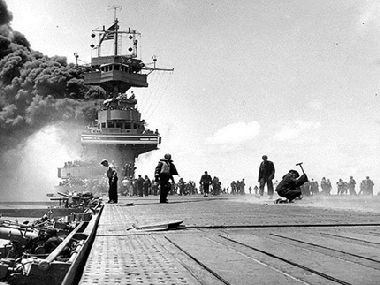
The Pacific War - The Defence of Australia
Australia under threat from a seemingly unstoppable Japanese invasion force. The attacks on Australian soil, the planned invasion of Port Moresby, the Battle of the Coral Sea and the heroic defence of Milne Bay. How the combined US and Australian Forces turned the tide of WW2 in the Pacific region.
The Battle for Guadalcanal
The scene of one of the bloodiest contests in the South Pacific during WW2, Guadalcanal was to become the final resting place for many thousands of soldiers, and the stage for one of the greatest and most disastrous Pacific naval engagements off Honiara.
A Call to Arms - The First ANZAC Convoy 1914
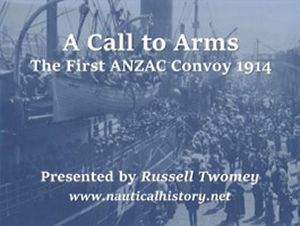
War is declared, and the Commonwealth Dominions spring to the defence of the motherland. The first convoy of volunteers quickly assembles in the great harbour of Albany, WA which for many will be their last ever sight of their homeland. We follow the routine and hardships of the expeditionary forces, and the events surrounding Australia's first successful naval battle, against the German warship SMS Emden.
The Siege of Malta 1940-42
In 1940 Winston Churchill described Malta as "an unsinkable aircraft carrier". Germany's Field Marshall Rommel observed that without capturing Malta, the Axis Powers would not be able to take and hold North Africa. So began one of the most fierce and bloodiest battle grounds of WW2. We discuss the incredible determination of those hardy seamen who lived through the nightmares that were The Malta Convoys and examine the brave defence of this small, vulnerable but crucial member of the British Empire, the human cost to both sides, and the bravery of the Maltese citizens themselves.
And More Historic Presentations
Rogues of the South Pacific
The South Pacific conjures up romantic notions of an idyllic life in paradise, but sadly for many it spelt terrible misfortune and disaster. Fraud and treachery are woven into amazing but true stories of several of the most infamous rogues, and the unfortunates who came seeking a new life but suffered instead at the hands of those with misplaced vision and selfish ambitions.
They Came By Sea - Immigration to Australia
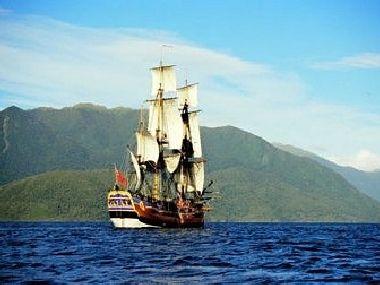
Some in search of a new beginning, others to seek their fortunes, and yet others to escape the misery of poverty in their homeland. No matter the motivation, over two centuries millions left their past life behind and made the dangerous passage by sea to start a new life in a land of promise.
We follow the hardships of those who came by sea, the conditions they travelled under and what lay before them as they left the Old World in search of the New.
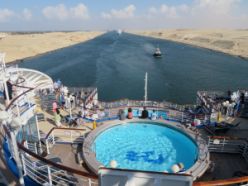
Sailing the Suez
(Refer to publication at the top of this page)
One of the truly great waterways of the world; to sail the Suez Canal is a truly memorable experience.
We go back in history to understand the early ambitions of those who envisioned an easy passage between the great continents to facilitate trade and migration. We then pass down through the centuries to understand how, against fierce opposition the Canal finally became a reality; the determination of one man who drove the dream, and more recently, the battles fought over its own sovereignty.
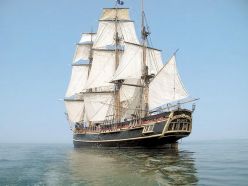
The Bounty Mutiny
Was Capt. Bligh a tyrant as he is portrayed in popular legend? Or was he a victim of unfortunate circumstances? Were the mutineers justified in their actions? We follow the events leading up to this infamous incident and what lay ahead for both the victims and the mutineers.
Historic Maritime Events
Innovation on the high seas! The first working submarine and the first lightbulb at sea. The world's first turbine engine in a vessel. A look at some of the most important events in maritime history, including the arrest of the murderer Dr. Crippen using the new wireless telegraph, and the story of the world's first nuclear merchant ship.

A Tale of Two Canals
The Suez and Panama Canals, despite traversing two very different landscapes on opposite sides of the world, presented some strikingly similar challenges during their construction. We uncover the political intrigue, the human cost, the seemingly insurmountable engineering challenges, and the determination of those who brought them to reality.
Oddities
Weird Ships

What does a triangle shaped ship, an ironclad monitor, a ship designed to stand on its head, a vessel that once flew, Noah’s Ark and much more all have in common? All were all built for a specific purpose in mind, but by common standards stand out as curiosities. What were they thinking?

